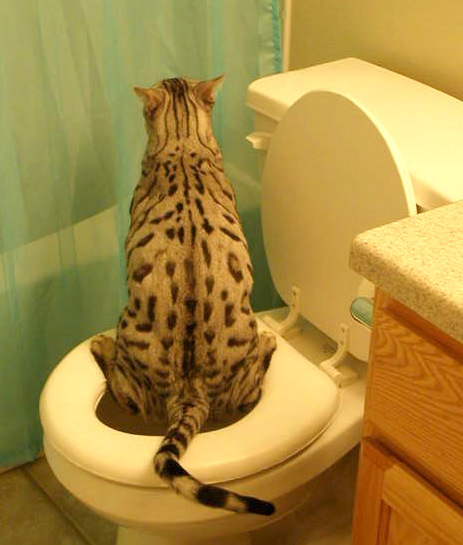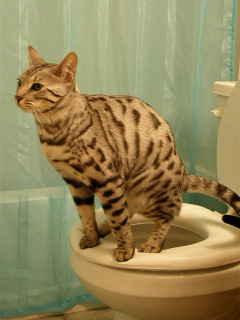Were you interested in answers concerning Can You Flush Cat Poop Down The Toilet??

Introduction
As cat owners, it's necessary to bear in mind just how we take care of our feline buddies' waste. While it may seem hassle-free to purge pet cat poop down the toilet, this practice can have damaging consequences for both the setting and human health.
Ecological Impact
Flushing cat poop introduces dangerous pathogens and parasites into the water system, presenting a substantial risk to marine environments. These contaminants can negatively impact marine life and compromise water quality.
Health Risks
Along with ecological worries, flushing cat waste can also pose health threats to human beings. Pet cat feces might consist of Toxoplasma gondii, a parasite that can cause toxoplasmosis-- a potentially serious disease, particularly for pregnant ladies and people with damaged body immune systems.
Alternatives to Flushing
Fortunately, there are more secure and a lot more liable ways to deal with cat poop. Take into consideration the adhering to alternatives:
1. Scoop and Dispose in Trash
The most usual approach of disposing of cat poop is to scoop it right into an eco-friendly bag and toss it in the trash. Make sure to make use of a specialized clutter scoop and dispose of the waste immediately.
2. Use Biodegradable Litter
Go with naturally degradable pet cat trash made from products such as corn or wheat. These clutters are environmentally friendly and can be safely thrown away in the garbage.
3. Hide in the Yard
If you have a backyard, think about hiding pet cat waste in a marked location far from veggie yards and water resources. Make certain to dig deep enough to prevent contamination of groundwater.
4. Set Up a Pet Waste Disposal System
Purchase a family pet garbage disposal system particularly made for pet cat waste. These systems use enzymes to break down the waste, decreasing smell and environmental influence.
Verdict
Responsible pet possession prolongs beyond offering food and shelter-- it also involves correct waste administration. By avoiding purging feline poop down the commode and selecting alternate disposal approaches, we can decrease our environmental footprint and safeguard human health.
Why Can’t I Flush Cat Poop?
It Spreads a Parasite
Cats are frequently infected with a parasite called toxoplasma gondii. The parasite causes an infection called toxoplasmosis. It is usually harmless to cats. The parasite only uses cat poop as a host for its eggs. Otherwise, the cat’s immune system usually keeps the infection at low enough levels to maintain its own health. But it does not stop the develop of eggs. These eggs are tiny and surprisingly tough. They may survive for a year before they begin to grow. But that’s the problem.
Our wastewater system is not designed to deal with toxoplasmosis eggs. Instead, most eggs will flush from your toilet into sewers and wastewater management plants. After the sewage is treated for many other harmful things in it, it is typically released into local rivers, lakes, or oceans. Here, the toxoplasmosis eggs can find new hosts, including starfish, crabs, otters, and many other wildlife. For many, this is a significant risk to their health. Toxoplasmosis can also end up infecting water sources that are important for agriculture, which means our deer, pigs, and sheep can get infected too.
Is There Risk to Humans?
There can be a risk to human life from flushing cat poop down the toilet. If you do so, the parasites from your cat’s poop can end up in shellfish, game animals, or livestock. If this meat is then served raw or undercooked, the people who eat it can get sick.
In fact, according to the CDC, 40 million people in the United States are infected with toxoplasma gondii. They get it from exposure to infected seafood, or from some kind of cat poop contamination, like drinking from a stream that is contaminated or touching anything that has come into contact with cat poop. That includes just cleaning a cat litter box.
Most people who get infected with these parasites will not develop any symptoms. However, for pregnant women or for those with compromised immune systems, the parasite can cause severe health problems.
How to Handle Cat Poop
The best way to handle cat poop is actually to clean the box more often. The eggs that the parasite sheds will not become active until one to five days after the cat poops. That means that if you clean daily, you’re much less likely to come into direct contact with infectious eggs.
That said, always dispose of cat poop in the garbage and not down the toilet. Wash your hands before and after you clean the litter box, and bring the bag of poop right outside to your garbage bins.
https://trenchlesssolutionsusa.com/why-cant-i-flush-cat-poop/

I'm certainly very serious about How to Dispose of Cat Poop and Litter Without Plastic Bags and I'm hoping you enjoyed reading the entire blog entry. Kindly take the opportunity to distribute this blog if you appreciated it. I recognize the value of reading our article about How to Dispose of Cat Poop and Litter Without Plastic Bags.
Book-Now